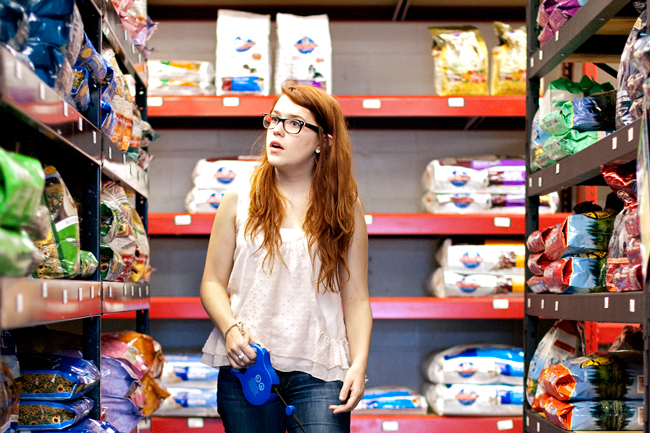It is easy to run into the supermarket and grab a bag of dog food; filling a bowl with kibble every morning becomes a mindless act. But Bark ‘n Purr manager Sandy Schultz urges pet owners to take a closer look at the nutrition label of the pet food they are buying. Schultz said pet owners may be unknowingly feeding their pets food laden with ingredients such as recycled transfat grease and old grains covered in mold.
“What you feed your pet directly affects their health, longevity and temperament,” Schultz said.
According to Schultz, the first item listed on the dog or cat food should be a named meat meal, such as rabbit, chicken or lamb. Meal refers to meat in which the moisture is removed.
“If you just see ‘meat meal’ on the ingredient list, that is the lowest grade protein you can buy,” Schultz said. “But if it says ‘lamb meal,’ it is actually specifying which animal it came from, which means it’s higher grade.”
Schultz said that pet owners should analyze the protein and fat levels in the pet food they are buying. She said the protein level should be 22 percent or higher for dogs and 34 percent or higher for cats. But Schultz warns customers to be wary of proteins that come from plants.
“Animals don’t handle proteins from plants as well as meats,” Schultz said. “Eating these proteins tends to cause upset stomachs for pets.”
Advertising and theater junior Kate Griffiths recently decided to feed her Australian shepherd, Scout, a more protein and fat-rich diet because he was experiencing stomach problems.
“Given what I’ve read about pet food, I want to feed him grain-free [food] because dogs don’t need carbohydrates,” Griffiths said. “Feeding him food enriched with grains is like if I eat fast food: I feel gross and tired. But if I eat healthily and cook for myself, I have energy.”
Praising the powers of a grain-free diet, Schultz said that carbohydrates inhibit a dog’s ability to use stored fat for energy. Schultz said cats do not produce the enzyme needed to digest carbohydrates, and thus cats will grow fatter because their body is designed not to feel full until they have eaten enough meat.
Ultimately Schultz believes raw pet food diets are the healthiest choice for owners. A raw diet emphasizes raw meat, vegetables, bones and fruit. Schultz said that though a raw diet is more expensive, the positive effects of the diet directly lead to a lower veterinarian bill. According to Schultz, pets who consume a raw diets have better muscle tone, higher activity levels, reduced shedding, reduced solid waste output and shinier coats.
“I used to think cats were just lazy and slept all day,” Schultz said. “An average cat sleeps 15 hours a day, but when you switch him to a raw food diet, he sleeps nine hours a day.”
But Dr. Richard Reinap II of Bee Cave Veterinary Clinic does not recommend raw food diets to his patients. Though he believes it is ultimately the customer’s prerogative as to which pet diet he or she chooses, Reinap is wary of raw food diets because of their increased risk of foodborne illnesses.
“The reason we, as humans, cook food is because it kills these food-borne illnesses and is more safe,” Reinap said.
Reinap said that most pet foods are created based off of research by large companies, and thus buying recognized name-brand food is typically a sufficient diet for pets. Reinap added that this could change if the pet has or is predisposed to a medical problem. Reinap tells his patients that as long as their pet’s diet is a good, nutritionally-sound diet, it does not matter whether the food is organic or purchased locally. But Griffiths says she will never go back to buying grain-based food.
“Scout is like a child to me,” Griffiths said. “Now that I know more about ingredients and what they really mean, I would never feed him some foods.”





















